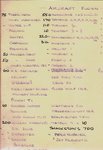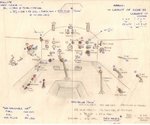soemone has dat of first combat in wester emispher for Corsair and Hellcat?
if i understand right first combat for both with FAA was april '44 over Norway
Corsair: April, 4th, 1944. Planes from HMS Victorious attack Tirpitz. Corsairs cover the bombers.
Hellcat: December 1943. Anti-shipping mission off the coast of Norway


